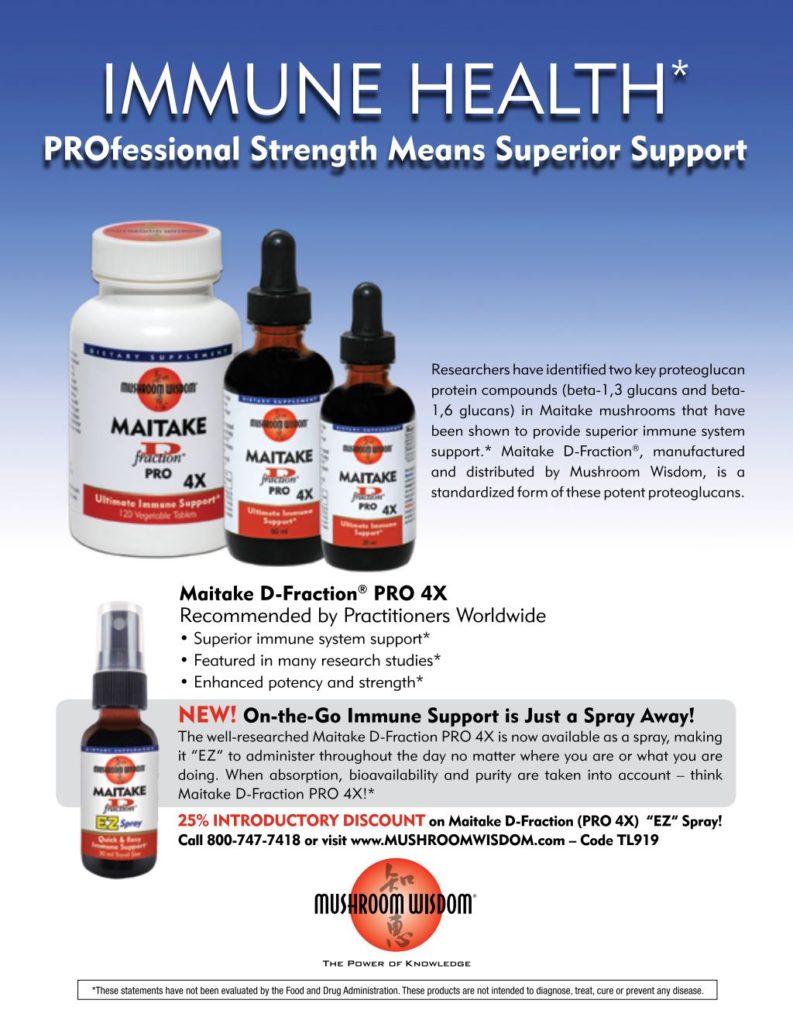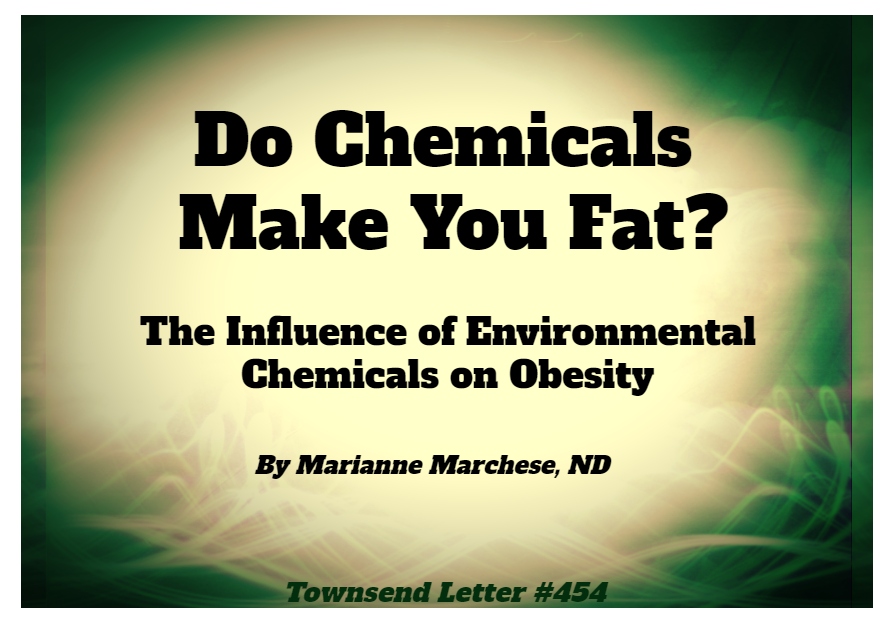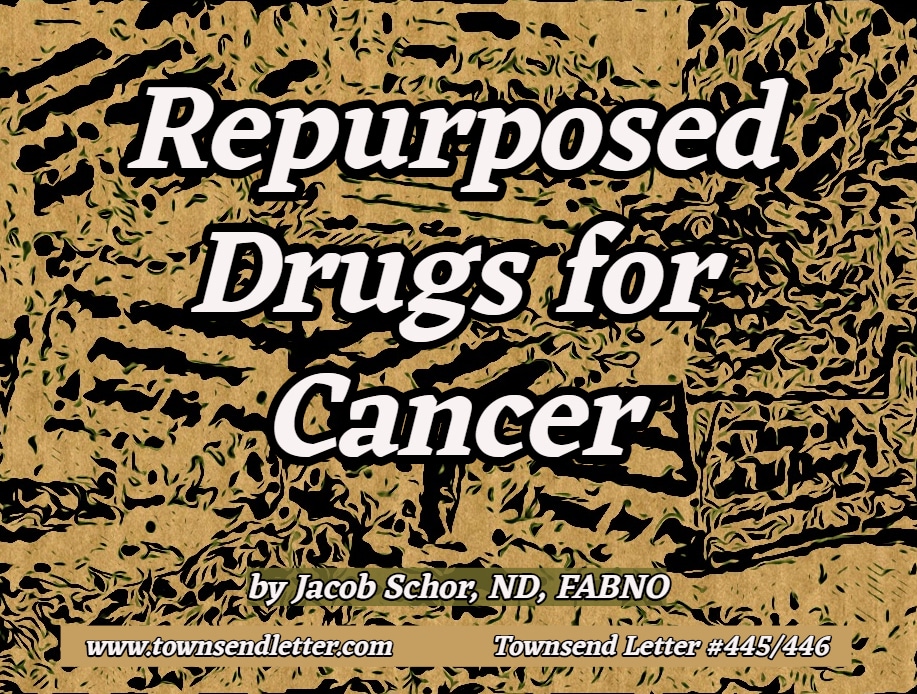…article continued…
Diet, supplements, and the autonomic nervous system. Dietary advice for all patients includes organic food, unprocessed and unrefined, with no white flour, white sugar, or inflammatory oils. Beyond that, in this model, different patients need different diets, from nearly vegetarian to a diet replete with animal protein and fat, in addition to root and cruciferous vegetables. Different patients also need different supplement protocols, with the vegetarian patients doing well with magnesium and potassium, the carnivores needing more calcium.
The model is based on Kelley’s clinical observations, with support from the work of Dr. Francis Pottenger and Dr. Ernst Gellhorn.14,15 The two parts of the autonomic system, the sympathetic “fight-flight-freeze” system and the parasympathetic “rest-digest” system, ideally operate in a balanced way. Genetic predisposition, environmental stressors and aging can push one system or the other to be overactive, resulting in poor health. Health can be improved by improving the balance of the autonomic system.
The sympathetic nervous system can be toned down by an alkalinizing diet and by magnesium and potassium but is stimulated by calcium. Patients with an overactive parasympathetic system tend to be too alkaline and do well with red meat, fat, and supplemental calcium. Patients whose metabolism is balanced need a variety of foods and moderate amounts of magnesium, potassium, and calcium. A detailed explanation of this, with a review of Pottenger’s and Gellhorn’s work, can be found in Nick’s book Nutrition and the Autonomic Nervous System.16
Kelley predicted that an overactive sympathetic system contributes to carcinomas, such as lung, breast, pancreas, colon or prostate cancer. Patients with an overactive parasympathetic system would develop cancers of the immune system, such as myeloma, leukemia, and lymphoma.
Nick told me once that the principles of autonomic imbalance could help make sense out of many of the bits and pieces that would float past in the medical and nutritional literature. As an example, researchers have found that breast cancer patients who were prescribed beta-blockers (for reasons other than breast cancer, such as hypertension or heart disease) do better than patients who were not prescribed this medication.17 In Kelley’s model, breast cancer patients have an overactive sympathetic nervous system, and beta-blockers specifically block the beta-adrenergic receptor of the sympathetic nervous system, bringing these patients’ metabolisms closer to balance.
In another study, administration of calcium supplements slightly raised the risk of heart attack.18 A subsequent article, pooling the results of many studies, suggested that there was no such increased risk.19 Calcium, as a stimulator of the sympathetic nervous system, could well be an instigator of heart attacks if given to patients whose sympathetic nervous systems are already too active. In the Kelley model, patients with overactive parasympathetic nervous systems need and thrive on high doses of calcium supplements, while patients with overactive sympathetic systems need very little. The patients in the study showing increased risk might well have been made up mostly of those with overactive sympathetic systems. Larger analyses, pooling data from many studies with patients of a variety of metabolic types, would show no risk.
In contrast to Kelley, Nick and myself, others in the integrative nutritional world state that everyone should be on the same diet, which might be anywhere from vegan to low-carb—usually the diet that the prescribing practitioners feel best eating for themselves. With our methods, I will find myself recommending for some patients a diet with less animal protein than works for me, and for others a diet with much much more. Two of my patients, who were included in our 2007 article in Alternative Therapies in Health and Medicine,2 illustrate this point; one, with pancreatic cancer, was told to eat a near-vegetarian diet, the other, with lymphoma, was told to eat large amounts of animal protein. Both patients are alive and well today, twenty years or more since diagnosis. Each continues to eat the prescribed diet with relish. The vast majority of the time, patients feel well with the recommendations we give.
Many other nutritional supplements besides magnesium, potassium and calcium have an effect on autonomic nervous system balance as well, which is why I warn my patients not to add to or modify their protocol without talking to me first. Emotional states and stress are also important, since negative emotions can activate the sympathetic nervous system powerfully.20
Detoxification. Detoxification, primarily with the use of coffee enemas, is the third component of the work I do. Coffee enemas were widely used in mainstream medicine in the nineteenth and the first half of the twentieth century for the treatment of poisoning and in postoperative care.21-27 Theoretically, coffee enemas stimulate bile flow from the liver and gallbladder, thereby assisting removal of wastes. Support for this comes from a 2014 article describing their use in clearing bile prior to capsule endoscopy.28 Alternative Therapies in Health and Medicine recently published an article of mine reviewing this subject.29
Kelley found that pancreatic enzyme ingestion could lead to flu-like symptoms that were relieved by coffee enemas, and so he incorporated them as a key component of his treatment regimen. On a practical level, Nick and I have had patients decide that the enemas were unnecessary, and none have done well. Most patients immediately feel better when they do them, so compliance with this aspect is better than I would have predicted before I tried them myself. However, some patients cut corners because of the time it takes, as well as a fundamental lack of appreciation of the importance of detoxification. Dietary quality and avoidance of environmental pollutants also fit into the category of detoxification, because bringing in unnecessary toxins slows the whole process down.
Conclusion
In an ideal world, methodologies that look promising in case reports are then evaluated in a formal clinical trial.30 Nick and I tried our best, starting with a pilot study in pancreatic cancer published in 1999.31
The clinical trial that followed was, in our opinion, rendered worthless because of problems in study design, mismanagement, and poor compliance on the part of the majority of the patients enrolled.32,33 The academic researchers involved did not discuss compliance in their publication of the results, even though this had been discussed extensively as the trial progressed.34,35 The oncology community was profoundly unsupportive of the trial, and I believe this affected patient compliance with the protocol.
Nick and I have focused on publication of case reports over the years, but one of the most common questions, from both patients and other practitioners, has been, “What is your success rate?” Understandably, patients want to know what the likelihood of success is for their particular situation. Unfortunately, it is a question that is impossible to answer in a scientifically rigorous and responsible way, due to a heterogeneous patient population, variations in adherence, and difficulty finding an appropriate comparison group in the medical literature. Nick and I addressed this in the last article we wrote together, published a few months before his death in 2015.36
My goal in continuing to practice and publish case reports is to keep this work alive to help interested patients with no curative options, or those who have completed their orthodox therapy. It is my hope that one day the medical world will be more receptive and willing to fairly investigate the results.
References
1. Gonzalez NJ. One Man Alone; An Investigation of Nutrition, Cancer, and William Donald Kelley. New York, NY: New Spring Press; 2010.
2. Gonzalez NJ, Isaacs LL. The Gonzalez therapy and cancer: a collection of case reports. Altern Ther Health Med. 2007;13(1):46-55. Available at: http://www.alternative-therapies.com/at/web_pdfs/gonzalez1.pdf.
3. Gonzalez NJ. Conquering Cancer: Volume One. New York, NY: New Spring Press; 2016.
4. Gonzalez NJ. Conquering Cancer: Volume Two. New York, NY: New Spring Press; 2017.
5. Isaacs LL. An enzyme-based nutritional protocol in metastatic cancer: case reports of a patient with colon cancer and a patient with lung cancer. Altern Ther Health Med. 2019;25(4):16-19. Available at: https://www.drlindai.com/Alt-ther-7-2019.pdf.
6. Simmonds PC. Palliative chemotherapy for advanced colorectal cancer: systematic review and meta-analysis. Colorectal Cancer Collaborative Group. BMJ. 2000;321(7260):531-535.
7. Hu C, Chang EL, Hassenbusch SJ, et al. Nonsmall cell lung cancer presenting with synchronous solitary brain metastasis. Cancer. 2006;106(9):1998-2004.
8. Gonzalez NJ. The History of the Enzyme Treatment of Cancer. Altern Ther Health Med. 2014;20(S2):30-44.
9. Gonzalez NJ, Isaacs LL. The Trophoblast and the Origins of Cancer: One solution to the medical enigma of our time. New York, NY: New Spring Press; 2009.
10. Beard J. The Enzyme Treatment of Cancer and Its Scientific Basis. London: Chatto and Windus; 1911.
11. Murray MJ, Lessey BA. Embryo implantation and tumor metastasis: common pathways of invasion and angiogenesis. Semin Reprod Endocrinol. 1999;17(3):275-290.
12. Bar-Shavit R, Maoz M, Kancharla A, et al. Protease-activated receptors (PARs) in cancer: Novel biased signaling and targets for therapy. Methods Cell Biol. 2016;132:341-358.
13. Even-Ram SC, Grisaru-Granovsky S, Pruss D, et al. The pattern of expression of protease-activated receptors (PARs) during early trophoblast development. J Pathol. 2003;200(1):47-52.
14. Pottenger FM. Symptoms of Visceral Disease. St. Louis, MO: C.V. Mosby Company; 1944.
15. Gellhorn E. Principles of Autonomic-Somatic Integrations: Physiological Basis and Psychological and Clinical Implications. Minneapolis, MN: University of Minnesota Press; 1967.
16. Gonzalez NJ. Nutrition and the Autonomic Nervous System: The scientific foundations of the Gonzalez Protocol. New York, NY: New Spring Press; 2017.
17. Barron TI, Sharp L, Visvanathan K. Beta-adrenergic blocking drugs in breast cancer: a perspective review. Ther Adv Med Oncol. 2012;4(3):113-125. Available at:
18. Xiao Q, Murphy RA, Houston DK, Harris TB, Chow WH, Park Y. Dietary and supplemental calcium intake and cardiovascular disease mortality: the National Institutes of Health-AARP diet and health study. JAMA Intern Med. 2013;173(8):639-646.
19. Waldman T, Sarbaziha R, Merz CN, Shufelt C. Calcium Supplements and Cardiovascular Disease: A Review. Am J Lifestyle Med. 2015;9(4):298-307.
20. Elefteriou F. Chronic stress, sympathetic activation and skeletal metastasis of breast cancer cells. BoneKEy reports. 2015;4:693.
21. Bedside procedures. In: Lyght CE, Keefer CS, Lukens FDW, Richards DW, Sebrell WH, Trapnell JM, eds. The Merck Manual of Diagnosis and Therapy. 11th ed. Rahway, NJ: Merck Sharp & Dohme Research Laboratories; 1966:1682-1683.
22. McClain ME. The patient’s needs: Enemas. Scientific Principles in Nursing. St. Louis, MO: The C.V. Mosby Company; 1950:168.
23. Stajano C. The concentrated coffee enema in the therapeutics of shock. Uruguayan Med Surg Special Arch 1941;29(3):1-27.
24. The Medicinal Employment of Coffee. The Sanitary Record. 1897;20:105S-106S. Available at: https://books.google.com/books?id=tS0TAAAAYAAJ.
25. Mississippi Valley Medical Association Society Proceedings. West Med Review. 1896;1(7):189-194. Available at: http://google.com/books?id=tOVXAAAAMAAJ.
26. Allison CC. Operative Technique in Appendicitis, with Cases. West Med Review. 1896;1(6):152-154. Available at: http://google.com/books?id=tOVXAAAAMAAJ.
27. Cachot MA. Case of Poisoning by Aconite; Enema of Coffee in the Treatment. Pac Med Surg J 1866;9:239-240. Available at: http://google.com/books?id=BkAgAQAAIAAJ.
28. Kim ES, Chun HJ, Keum B, et al. Coffee enema for preparation for small bowel video capsule endoscopy: a pilot study. Clinical nutrition research. 2014;3(2):134-141. Available at: https://e-cnr.org/Synapse/Data/PDFData/9994CNR/cnr-3-134.pdf.
29. Isaacs LL. Coffee Enemas: A Narrative Review. Altern Ther Health Med. 2021;27(3):46-49.
30. Isaacs LL. Evaluating anecdotes and case reports. Altern Ther Health Med. 2007;13(2):36-38. Available at: http://www.alternative-therapies.com/at/web_pdfs/isaacs.pdf.
31. Gonzalez NJ, Isaacs LL. Evaluation of pancreatic proteolytic enzyme treatment of adenocarcinoma of the pancreas, with nutrition and detoxification support. Nutr Cancer. 1999;33(2):117-124. Available at: http://www.ncbi.nlm.nih.gov/pubmed/10368805.
32. Gonzalez NJ. What Went Wrong: The Truth Behind the Clinical Trial of the Enzyme Treatment of Cancer. New York, NY: New Spring Press; 2012.
33. Isaacs LL. Research Battles: Survival Tips From a Veteran. Integr Med (Encinitas). 2015;14(5):30-32. Available at: https://www.ncbi.nlm.nih.gov/pmc/articles/PMC4712871/.
34. Chabot JA, Tsai WY, Fine RL, et al. Pancreatic proteolytic enzyme therapy compared with gemcitabine-based chemotherapy for the treatment of pancreatic cancer. J Clin Oncol. 2010;28(12):2058-2063.
35. Engel LW. 2005. Available at: https://www.drlindai.com/engel.pdf.
36. Gonzalez NJ, Isaacs LL. Statistics: Why Meaningful Statistics Cannot Be Generated From a Private Practice. Altern Ther Health Med. 2015;21(2):11-15.

Linda L. Isaacs, MD, received her Bachelor of Science from the University of Kentucky. After medical school at Vanderbilt University, she completed her residency in internal medicine and is certified by the American Board of Internal Medicine. In her practice, she uses nutritional protocols to treat patients diagnosed with cancer and other serious degenerative illnesses. She and her colleague, the late Dr. Nicholas Gonzalez, published articles about cancer in the peer-reviewed journals Nutrition and Cancer and Alternative Therapies in Health and Medicine, and co-authored the book The Trophoblast and the Origins of Cancer. Visit her website at www.drlindai.com










